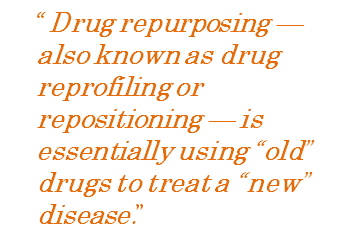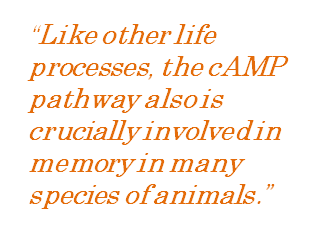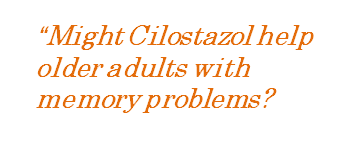Drugs have many purposes, and all of us have taken various medications at some point in our lives for varied and specific reasons. Medications are used to make us feel better by reducing fever, pain, or treat symptoms of a disease, or they can specifically interrupt the disease process directly. Medicinal drugs have saved many lives in the past and are saving even more lives now. They also have the potential to make our life more comfortable.
 The number of new medicines emerging in the consumer market has decreased rapidly in recent years despite tremendous technical and scientific advances. New drug discovery might be viewed as searching for the proverbial "needle in a haystack": There is a virtual Mount Everest of compounds in the world that might be useful for medicines, but they each need to be refined and tested. In the search for new medicines, speed is essential. Scientific advances to speed up discovery include high-throughput drug screening, which allows a researcher to rapidly conduct millions of chemical tests to discover new medicines; advances in combinatorial chemistry, which allow researchers to prepare millions of potentially useful medicinal compounds in a single process; and in silico drug-target interaction analysis, which uses computers and biological information to predict whether a new drug will be effective. These are among the many advances that have pushed drug discovery forward. However, while all of these advances attack the speed problem, all of these new techniques also come with a hefty price tag. Why so expensive? Because many potentially useful new drugs identified with these methods turn out to be ineffective in clinical testing or have too many harmful side effects to be used. Time and money are wasted while testing all the "hay" in the haystack just to find the one "needle." A whole new strategy is needed.
The number of new medicines emerging in the consumer market has decreased rapidly in recent years despite tremendous technical and scientific advances. New drug discovery might be viewed as searching for the proverbial "needle in a haystack": There is a virtual Mount Everest of compounds in the world that might be useful for medicines, but they each need to be refined and tested. In the search for new medicines, speed is essential. Scientific advances to speed up discovery include high-throughput drug screening, which allows a researcher to rapidly conduct millions of chemical tests to discover new medicines; advances in combinatorial chemistry, which allow researchers to prepare millions of potentially useful medicinal compounds in a single process; and in silico drug-target interaction analysis, which uses computers and biological information to predict whether a new drug will be effective. These are among the many advances that have pushed drug discovery forward. However, while all of these advances attack the speed problem, all of these new techniques also come with a hefty price tag. Why so expensive? Because many potentially useful new drugs identified with these methods turn out to be ineffective in clinical testing or have too many harmful side effects to be used. Time and money are wasted while testing all the "hay" in the haystack just to find the one "needle." A whole new strategy is needed.
To overcome these drawbacks in searching for new drugs, "drug repurposing" has come into the spotlight. What is drug repurposing? Drug repurposing - also known as drug reprofiling or drug repositioning - is essentially using "old" drugs to treat "new" diseases. With increases in knowledge about the molecular mechanisms underlying diseases, drug repurposing has emerged as a new strategy that involves using existing drugs and compounds originally developed for one disease to treat another disease for which no treatment exists. Because preclinical and most clinical drug-safety trials can be largely skipped for an already-approved drug, the time required for drug development is shorter in drug repurposing. It's as if the needle we found last week in the haystack to sew a patch on our clothes can now be used to pin a picture of our favorite flower on the wall. So too with drug repurposing: That old drug used to treat "disease A" can be used for a new purpose - to treat "disease B."
 Medicines that are no longer used for their initial purpose regain their utility surprisingly as new medicines to treat new diseases. Examples include using thalidomide to treat multiple myeloma, chloloquine to treat autoimmune diseases, and chinoform to treat dementia and autism. This strategy has become very valuable in recent years, as drug pipelines of pharmaceutical industries have continued to dry up. In addition, pharmaceutical companies realize that many previously promising technologies and compounds fail to generate medicines for their intended uses. So why not use them for another purpose? That is, use them to treat other diseases that share similar biological pathways and mechanisms.
Medicines that are no longer used for their initial purpose regain their utility surprisingly as new medicines to treat new diseases. Examples include using thalidomide to treat multiple myeloma, chloloquine to treat autoimmune diseases, and chinoform to treat dementia and autism. This strategy has become very valuable in recent years, as drug pipelines of pharmaceutical industries have continued to dry up. In addition, pharmaceutical companies realize that many previously promising technologies and compounds fail to generate medicines for their intended uses. So why not use them for another purpose? That is, use them to treat other diseases that share similar biological pathways and mechanisms.
The cAMP pathway, also known as the adenylyl cyclase pathway, is a microscopic biological signaling pathway used in cell-to-cell communication in the body. This pathway is necessary for many living organisms and life processes. cAMP comes into play during cellular processes responsible for heart rate, cortisol secretion, water absorption in the kidney, and breakdown of metabolic energy sources and fat, among others. cAMP is also crucial for maintaining memory in the brain.
 In our lab, we are leveraging the drug repurposing strategy by searching for new medicines to overcome memory problems due to aging and neurological disease. Like other life processes, the cAMP pathway also is crucially involved in memory in many species of animals. Existing medicines designed to elevate cAMP concentration nonspecifically increase its concentration widely across all body tissues. However, they fail to help memory, because they do not target cAMP concentration in the correct brain tissues required for memory formation. A recent approach to correctly adjust the cAMP pathway is to maintain and/or prolong the "on site" cAMP effect induced by memory-related neuronal activity. For this purpose, enzymes called phosphodiesterases (PDEs) have been targeted for memory enhancement and maintenance, since they are important for adjusting cAMP levels in the specific tissue of the body (or specific brain region).
In our lab, we are leveraging the drug repurposing strategy by searching for new medicines to overcome memory problems due to aging and neurological disease. Like other life processes, the cAMP pathway also is crucially involved in memory in many species of animals. Existing medicines designed to elevate cAMP concentration nonspecifically increase its concentration widely across all body tissues. However, they fail to help memory, because they do not target cAMP concentration in the correct brain tissues required for memory formation. A recent approach to correctly adjust the cAMP pathway is to maintain and/or prolong the "on site" cAMP effect induced by memory-related neuronal activity. For this purpose, enzymes called phosphodiesterases (PDEs) have been targeted for memory enhancement and maintenance, since they are important for adjusting cAMP levels in the specific tissue of the body (or specific brain region).
Inhibition of PDEs leads to increases in cAMP and ultimately to the expression of plasticity-related genes involved in memory. Cilostazol is a PDE inhibitor drug that was developed for treating deficient blood clotting in people. We discovered in our lab that cilostazol also beneficially affects memory function. Cilostazol is a specific PDE3 inhibitor and has been on the market for decades to prevent recurrent strokes and to treat intermittent leg cramping.  Recently, we showed that cilostazol enhances memory in young mice in a standard spatial memory task and in Pavlovian conditioning (Yanai et al., 2014). More importantly for our drug repurposing strategy, we showed that long-term administration of cilostazol significantly improves memory in very old mice. Might cilostazol help older adults with memory problems?
Recently, we showed that cilostazol enhances memory in young mice in a standard spatial memory task and in Pavlovian conditioning (Yanai et al., 2014). More importantly for our drug repurposing strategy, we showed that long-term administration of cilostazol significantly improves memory in very old mice. Might cilostazol help older adults with memory problems?
Other lab's work and ours' have further demonstrated the effectiveness of cilostazol and other PDE inhibitors for enhancing memory. Now, cilostazol is being tested in a clinical trial to treat mild cognitive impairment, which in people is marked by prominent memory problems.
In a sense, cilostazol is like an "old dog," one in which its owner has come to know his habits well. What if the old dog surprises his owner and learns a new "trick," like gently protecting his owner's new grandson from other barking dogs? The owner didn't have to go out and buy a young pup to watch over the grandson; the old dog in a sense was repurposed for a new task. Indeed, like the old dog that has learned a new trick, cilostazol soon may be available at your prescription counter to treat memory problems, thanks to drug repurposing, a quicker and safer way for drug discovery.